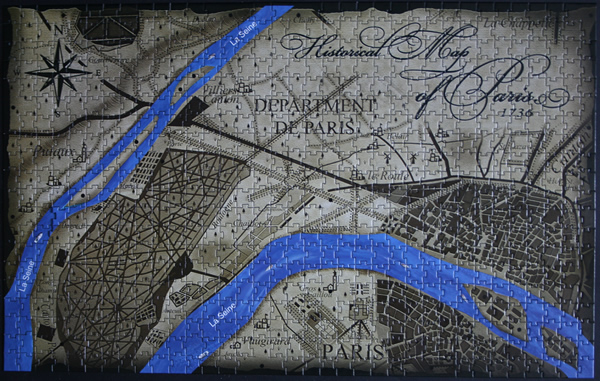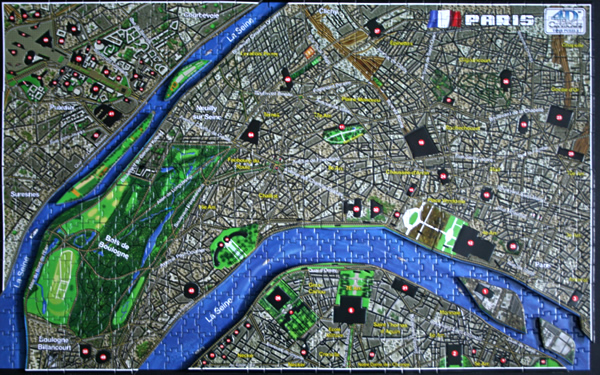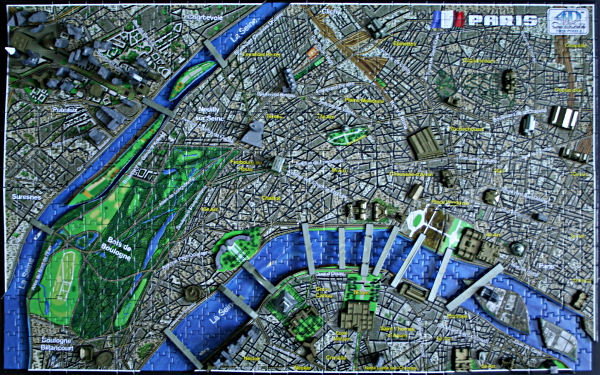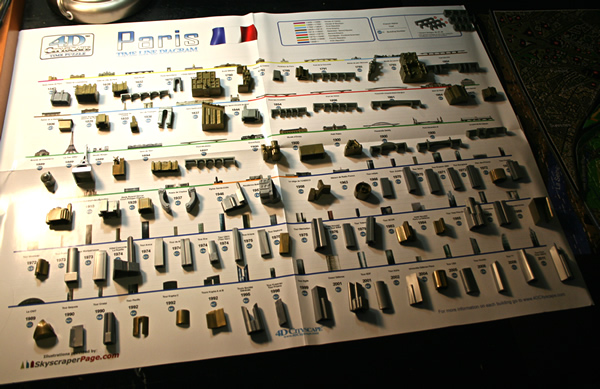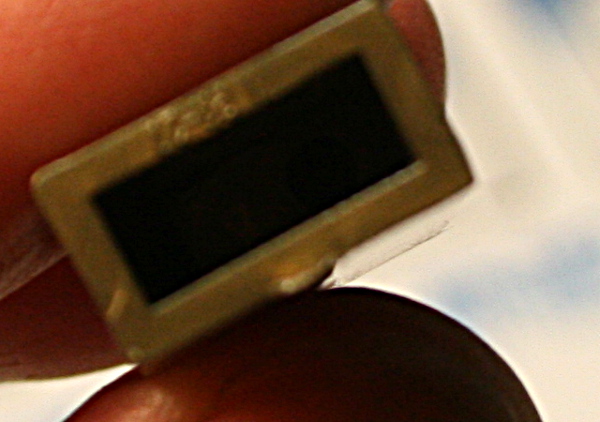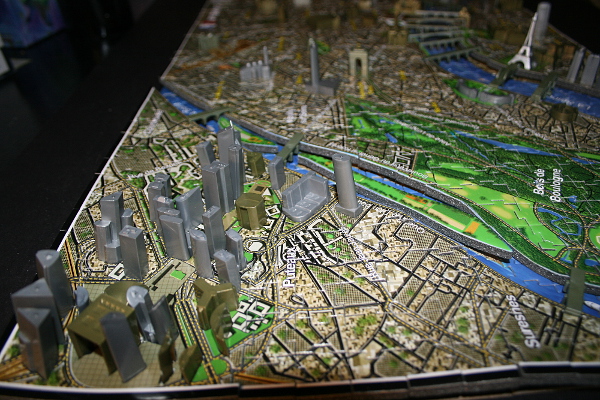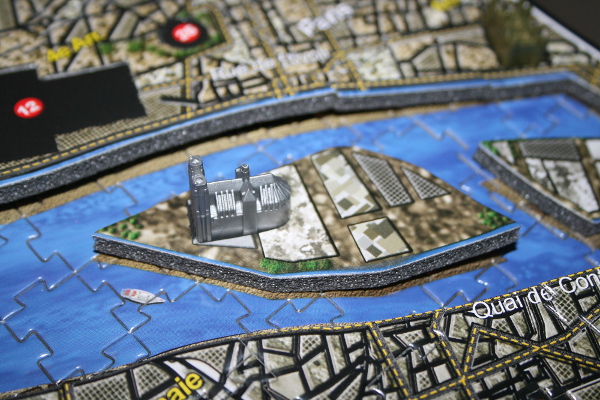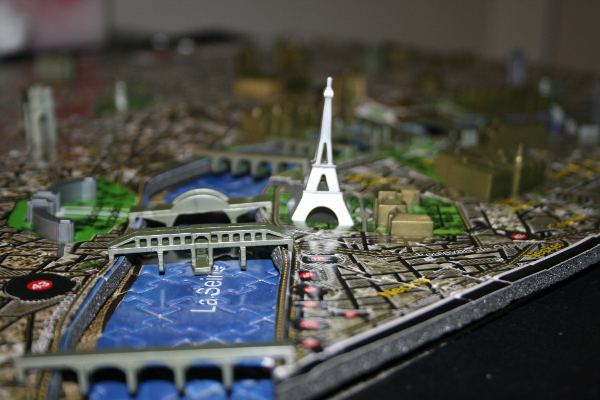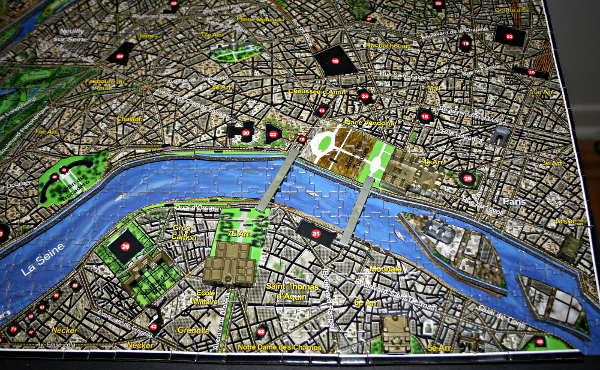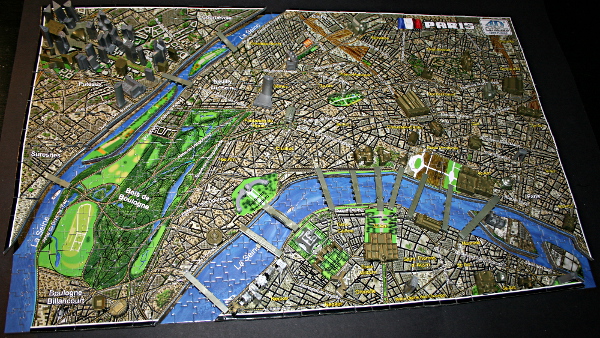The bottom layer jigsaw is a historic illustration of Paris in 1736 (base puzzle):
The second layer jigsaw puzzle is of Paris in the present year (landscape puzzle):
The third layer are buildings (3D replicas):
See below for the notes and additional images.
Size: 1100+ pieces – Layer 1: 656 pieces, Layer 2: 369 pieces, Layer 3: 88 pieces
Dimensions: 60.9 cm x 38.1 cm x 0.51 cm
Producer: 4D Cityscape, Time Puzzle series
Notes: 4D Cityscape allows you to build Paris starting from the year 1345. You first build the patented floor puzzle that consists of 1025 jigsaw pieces. Then you refer to the 4D Time Poster to identify and place each skyscraper on the map. This process is assembled in a time sequence according to the year each building was built. Experience and rebuild the past, present, and future! For ages 8+ to 108 years. [Puzzle box]
- Place each building on the map starting in 1345 with Notre Dame.
- Place Arc de Triomphe on the map in the year 1836.
- Rebuild Paris’s historical skyline including La Tour Eiffel in 1889.
- Learn the location, shape, and appearance of the Paris skyline. [Puzzle box]
Puzzle:
The first layer of the puzzle was fun to do – the river provides a good horizontal guide, large writing and the wind rose follow, and the rest of the islands, building blocks, and streets fall into place. The puzzle is well-cut and pieces generally fit together well.
The second layer of the puzzle was a bit more cumbersome, just because of the foam pieces that sometimes don’t fit together that well if they are bent. The dark placeholders with red numbers indicate where the building figures are to be placed at the next stage. This part was overall easy to do. The islands make their own smaller piece clusters.
The building figures were quite disappointing. First of all, the detail they are portrayed on the poster below does not exist in the pieces themselves. They are quite roughly made from plastic of silver or gold colour, and barely resemble their counterparts on the poster. Matching them was hard to do.
Presumably, to help with the matching, each figure had a number engraved on its bottom that corresponded to the number on the map and on the poster. But here comes the second problem: most of the pieces had numbers so tiny (see a closeup photo below) that they were very hard to distinguish, even with a magnifying glass.
Third issue came from the nature of interaction of the foam top layer and the plastic pieces. Especially in the areas where many buildings are clustered together, such as the corner of the map pictured below, or where two coasts are connected by multiple bridges close to each other, you can see the foam warping around the plastic pieces that fit into the map. This made the end puzzle a bit wobbly and not as aesthetically pleasing as the packaging would make you believe.
Generally, I have enjoyed making the puzzle layers and then building up the Paris model in the chronological order indicated on the poster. Some pieces do look nice close up, and it was fun to explore the evolution of the city.






